Newsletter September 2022
SciML at Kennedy Space Center?: The SciML community is conducting a 4 question survey to assess interest and potential participation in a February 2023 SciML conference at the Kennedy Space Center in Cape Canaveral, Florida. Please click here to participate in this survey.
Free Webinars from Julia Computing
-
Building Digital Twins with Dyad (Formerly JuliaSim): Click here to register for a free Julia Computing webinar, Building Digital Twins with Dyad (Formerly JuliaSim), on Tuesday October 18 from 2-3 pm Eastern (US). The Webinar is led by Dr. Raj Abhijit Dandekar (Julia Computing). Dyad (Formerly JuliaSim) is a next-generation simulation suite that combines the latest Scientific Machine Learning (SciML) techniques with equation-based digital twin modeling and simulation. Participants will learn how to build a digital twin with Dyad (Formerly JuliaSim) components, how to calibrate your model to data and how to train model surrogates. Space is limited, so please register now to reserve your spot.
-
Fast and Furious Development with JuilaHub Workflows: Click here to register for a free Julia Computing webinar, Fast and Furious Development with JuliaHub Workflows, on Friday October 28 from 2-3 pm Eastern (US). The Webinar is led by Deep Datta (Julia Computing). JuliaHub is the fastest, easiest way to access Julia, the fastest and most powerful high performance open source programming language for scientific and numerical computing. Webinar participants will learn how JuliaHub tooling provides the easiest on-ramp for enterprise development, how to use the Julia package registry, bring new Julia packages into JuliaHub, create a private package repository and bring continuous integration into your workflows. Space is limited, so please register now to reserve your spot.
-
PumasQSP: PumasQSP is a package and methodology for pharmacometrics users practicing QSP to solve difficult model calibration and analyses in a high-performance and user-friendly manner. New and upcoming features include:
-
New documentation
-
Tutorials
-
A full Pumas-QSP training exercise course including:
-
Model translation and definition
-
Generation of virtual populations using stochastic optimization
-
Subsampling of virtual populations using discrete density sampling
-
Global sensitivity analysis using Sobol
-
Pumas-QSP usage tips
-
Application of automatic parallelization on JuliaHub
-
More information is available here. Please contact us for more information.
Pumas v2.2 Release: Pumas is a comprehensive platform for pharmaceutical modeling and simulation, providing a single tool for the entire drug development pipeline. It is used for simulation and estimation of quantitative pre-clinical and clinical pharmacological models. Pumas v2.2 is now available, including the following features:
Pumas
-
Introduce prediction correction for continuous VPCs (pcVPC) based on a simulated population mean prediction
-
Support censoring and truncation with literal upper and lower bounds for SAEM (PumasEMModels)
-
A new closed-form solution for a model with one central compartment and one metabolite was added and is called Central1Meta1
PumasUtilities
-
All previous individual apps are now combined into a single app interface
-
Model builder UI for creating PumasModels
-
Data loader UI for reading in CSV files into DataFrames
-
Population Builder UI for converting DataFrames into Population objects
-
Launch interactive reports for selected diagnostics using Pluto notebooks
NCA
-
Support for Bioanalytical file format (all rows of amt filled) and separate dosing and concentration sheets
-
Sparse sampling NCA support
-
Dose linearity analysis, including plots and tables
Julia v1.8 Release: Julia v1.8 has been released. Highlights are available in Julia 1.8 Highlights and Julia 1.8 Improves Apple Silicon Support. New features include:
Julia Headlines September TIOBE Report: The latest TIOBE report is out and TIOBE CEO Paul Jansen says “Julia is getting close to the TIOBE index top 20. The Julia programming language is only 0.05% away from a top 20 position. Julia is designed for numerical analysis and computational science. There are many competing languages in that field. So what makes Julia stand out? Julia beats Matlab because it is much more modern and it can be used free of charge. Furthermore, Julia beats Python and R because it is much faster. Since there is a huge demand in the number crunching and modeling field, Julia has a serious chance to enter the top 20 in the near future.”
How Julia ODE Solve Compile Time Was Reduced From 30 Seconds to 0.1: SciML has published How Julia ODE Solve Compile Time Was Reduced From 30 Seconds to 0.1. Click here for more.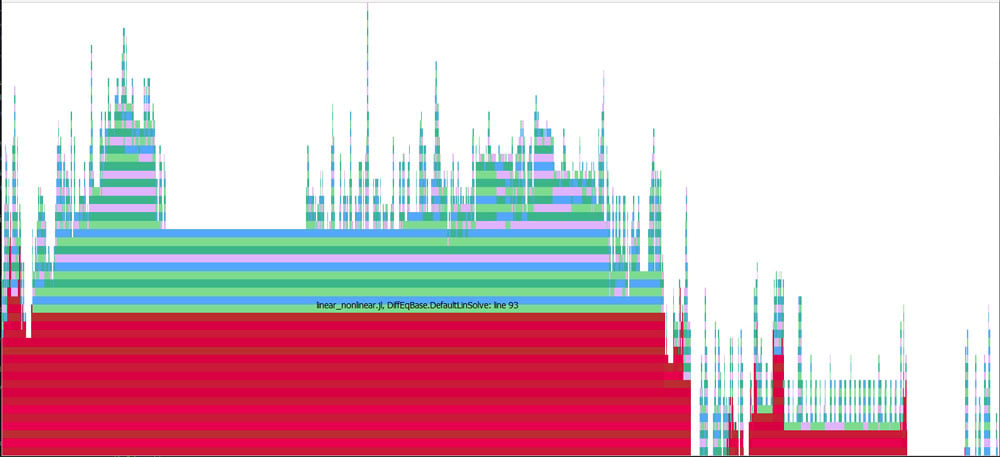
Julia for Epidemiology: Raj Dandekar has published two new blog posts: Julia for Epidemiology and Scientific Machine Learning for Epidemiologists - Part 1. The blog posts are available here and the code is available here.
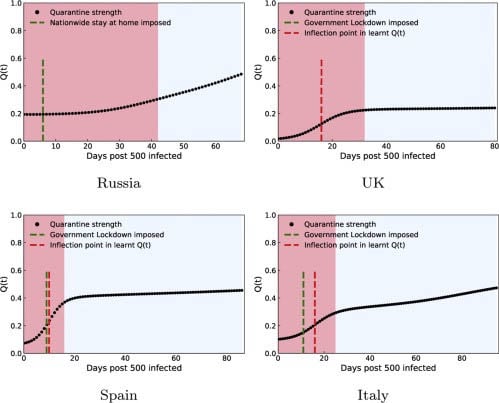
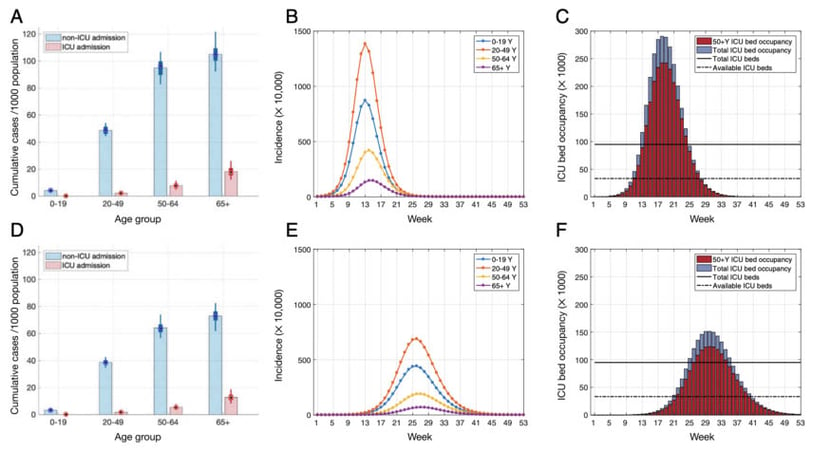
Julia for Astronomy: Emina Hafiz is a University of Calgary student who completed a summer internship using Julia at the Université de Montréal Institute for Research on Exoplanets. Hafiz explains her work: “Solving the N-body problem for the eight planet compact system of KOI 2433 by implementing Jacobi coordinates using the Julia programming language. It was interesting to learn how to use MCMC (Markov Chain Monte Carlo) to take estimates we have of certain planet characteristics such as mass and period to calculate a series of best fits for the data that allow us to recalculate those values more accurately. It’s also very interesting and exciting to know that these values at some point will be uploaded to the NASA Exoplanet Archive. I found the masses, periods, centre of transit, and eccentricities for the planets in the KOI 2433 system and created a visual of how the orbits looked. This data included a newly discovered planet for this system. I believe the most important result was the orbits of the exoplanets because it provides a lot of information about how the exoplanets interact with one another, which in turn affects their individual characteristics. I learned how to code in Julia and how to use MCMC. Before this internship, I only knew how to code in Python which is quite similar to Julia but isn’t as computationally powerful.”
Julia Computing - Coming to a Conference Near You: Julia Computing will be present at a number of upcoming conferences and events. Click below for more information.
-
San Jose, CA: Intel Innovation with Dr. Viral Shah and Dr. Raj Dandekar (Julia Computing) Sept 27-28
-
Dallas, TX: American Modelica Conference with Julia Computing Oct 26-28
-
Aurora, CO: American Conference on Pharmacometrics (ACoP) with Julia Computing and Pumas-AI Oct 30-Nov 2
-
New Orleans, LA: Conference on Neural Information Processing Systems (NeurIPS) with Julia Computing Nov 28-Dec 9
Algorithms for Decision Making: Algorithms for Decision Making is a new book from Mykel Kochenderfer, Tim Wheeler and Kyle Wray. Click here for more.

Interactive Visualization and Plotting with Julia: Interactive Visualization and Plotting with Julia is a new book by Diego Javier Zea. Click here for more information.
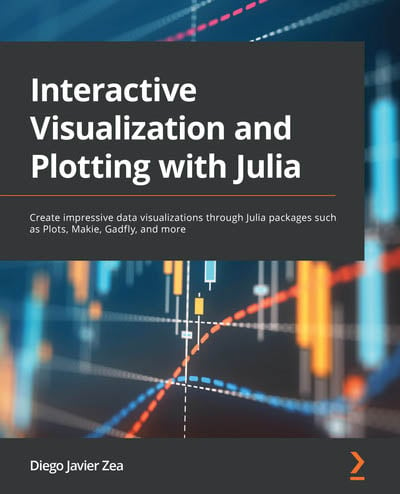
Fundamentals of Numerical Computation - Julia Edition: Fundamentals of Numerical Computation - Julia Edition is a new book by Tobin Driscoll and Richard Braun. Click here for more information.
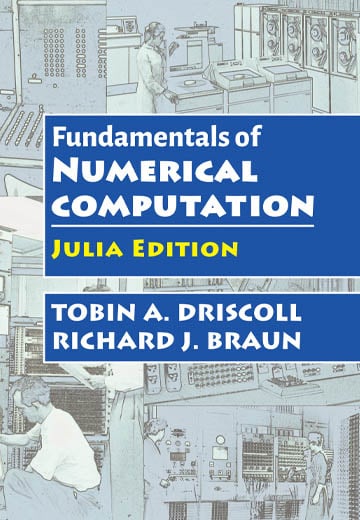
Solving Nonlinear Equations with Iterative Methods - Solvers and Examples in Julia: Solving Nonlinear Equations with Iterative Methods - Solvers and Examples in Julia is a new book by C.T. Kelley. Click here for more information.
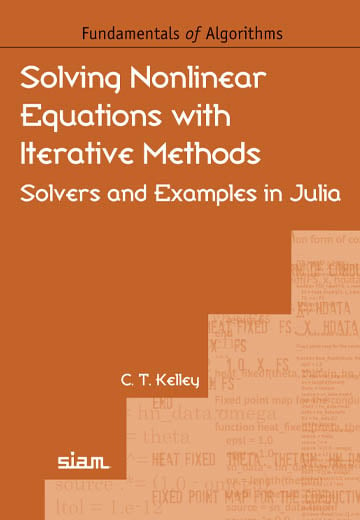
Research Software Engineering (RSE) International Survey: The UK Software Sustainability Institute has released the Research Software Engineering (RSE) International Survey. Julia ranks #12 on programming languages used at work, and has increased from 3.5% to 6.5%. Click here for full results.
Makie.jl: The Journal of Open Source Software has published Makie.jl: Flexible High-Performance Data Visualization for Julia. Click here for more.
BeautifulMakie: A new domain for BeautifulMakie is now available - Beautiful.Makie.org. Click here for more.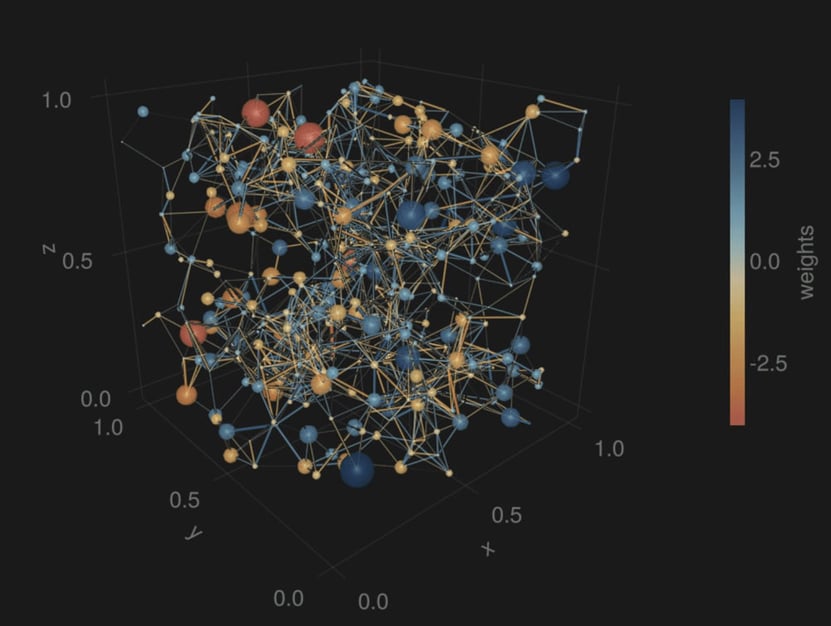
Converting from Proprietary Software to Julia: Are you looking to leverage Julia’s superior speed and ease of use, but limited due to legacy software and code? Julia Computing and our partners can help accelerate replacing your existing proprietary applications, improve performance, reduce development time, augment or replace existing systems and provide an extended trusted team to deliver Julia solutions. Leverage experienced resources from Julia Computing and our partners to get your team up and running quickly. For more information, please contact us.
Careers at Julia Computing: Julia Computing is a fast-growing tech company with fully remote employees in 12 countries on 5 continents. Click here to learn more about exciting careers and internships with Julia Computing.
Julia for Market Prediction: “G-Research is looking for a software engineer who is keen to contribute directly to the open-source Julia project. G-Research uses data science and machine learning tools to predict movements in the markets and we're very interested in furthering the development of the Julia language and supporting the community. This role could focus on a number of different areas from the compiler to Flux to improved packaging to DataFrames – there's a lot to do and we're looking for someone who has a passion to move an area of Julia forward. This role will be a part of our open-source program office so all contributions from this role will definitely impact the entire community. If you're interested, reach out at jobs@gr-oss.io."
Julia and Julia Computing in the News
-
I-Programmer: Julia 1.8 Improves Apple Silicon Support
-
Techopedia: Julia Programming Language
-
Open Source For You: Julia and Python: Which Language Is Quicker?
-
Eos: Notebooks Now! Elevating Computational Notebooks
-
Technical.ly: What Are You Building? Tell Us for Software Trends Month 2022
-
Visual Studio Magazine: VS Code Emerges As Remote Development Superstar
-
Dice: Can Julia Programming Language Become as Popular as Python, R?
-
Software Sustainability Institute: Research Software Engineering (RSE) International Survey
-
TIOBE: TIOBE Index for September 2022
-
Analytics Insight: Julia Over Python - Machine Learning Is Better Off with the MIT Programming Language
-
Analytics Insight: Why Is Python Guiltlessly Called a Failed Programming Language?
-
Hunt Daily News: Know What Is Artificial Intelligence and What Is Its Language
-
InfoWorld: How to Create Word Docs from R or Python with Quarto
-
Analytics India: Julia 1.8 Released, to Enhance Apple Silicon
-
OpenPR: Python Market Is Expected to Reach USD 100.6 Million in 2030
-
Scientific Computing World: Scaling Software for HPC
-
Analytics India: Python May Not be Great for Backend But is Still Preferred for ML
-
Financial Express: How to Make a Career in Artificial Intelligence and Machine Learning
-
India Today: AI Market Can Be Worth USD 7.8 Billion by 2025 - AI Career Roadmap for Beginners
-
Candid Technology: Data Science vs. Machine Learning: 7 Differentiating Points
-
The Register: Nearly One in Two Industry Pros Scaled Back Open Source Use Over Security Fears
-
Venture Beat: Artificial Intelligence (AI) Engineer: Learn About the Role and Skills Needed for Success
-
Université de Montréal Institute for Research on Exoplanets: Lookback at Our 2022 Summer Internships - Emina Hafiz
-
ExecutiveGov: DARPA Selects Teams to Create AI Tools for Automating Scientific Knowledge Extraction, Modeling
-
Journal of Open Source Software: Makie.jl: Flexible High-Performance Data Visualization for Julia
Julia Blog Posts
-
Scientific Machine Learning for Epidemiologists — Part 1 (Raj Dandekar)
-
Julia for Epidemiology (Raj Dandekar)
-
Pkg.jl and Julia Environments for Beginners (Julius Krumbiegel)
-
Composing Macros Inside-Out with Julia (Julius Krumbiegel)
-
SimpleChains.jl for NeuralODE and SciML (Abhishek Bhatt)
-
Julia 1.8 Highlights (Jeff Bezanson, Jameson Nash, Ian Butterworth, Kristoffer Carlsson, Shuhei Kadowaki, Elliot Saba, Mosè Giordano, Simeon Schaub, Tim Holy, Keno Fischer)
-
How Julia ODE Solve Compile Time Was Reduced From 30 Seconds to 0.1 (SciML)
-
Approximating a Function Using Derivatives (Tamás K. Papp)
-
Reproducible Examples in Blog Posts (Tamás K. Papp)
-
The Only Way You Should Be Splitting a String in Julia — Julia Base.split() (Logan Kilpatrick)
-
Why Julia 2.0 Isn’t Coming Anytime Soon (and Why That Is a Good Thing) (Logan Kilpatrick)
-
3 Features Just Added in Julia 1.8 You Won’t Want to Miss (Logan Kilpatrick)
-
5 Important Talks You Might Have Missed at JuliaCon 2022 (Logan Kilpatrick)
-
Tricky Concepts in Julia for Beginners (and How to Overcome Them) (Logan Kilpatrick)
-
How to Use Linear Models and Decision Trees in Julia (Logan Kilpatrick)
-
Julia Tutorial During Social Simulation Conference 2022 (Bogumił Kamiński)
-
Simple Is Best: Do You Really Need Your Code to Be Fast? (Bogumił Kamiński)
-
Does Julia Use 1-Based Indexing? (Bogumił Kamiński)
-
Subtypes of Concrete Types in Julia (Bogumił Kamiński)
-
Best Kept Secret of Modern CPU Technology (Bogumił Kamiński)
-
Back to the Basics: Don't Lag Behind with Your DataFrames.jl Skills (Bogumił Kamiński)
-
From Common Lisp to Julia (Michael Fiano)
-
Introducing ToolipsAuth.jl — The EASIEST Authentication In History! (Emmett Boudreau)
-
Olive Updates and Announcements (Emmett Boudreau)
-
Ecosystem Updates XL — Chi-Development Updates! (Emmett Boudreau)
-
ToolipsSVG — Making a New Interactive Vector Graphics Framework (Emmett Boudreau)
-
Fullstack One-Page Web-Apps in Julia (Toolips Tutorial) (Emmett Boudreau)
-
These New Features in Julia 1.8 Are AWESOME! (Emmett Boudreau)
-
Very Easy Ways to Improve Julia Constructors (Emmett Boudreau)
-
Putting the Finishing Touches on my Remote Web Package! (Emmett Boudreau)
-
I’ve Almost Stopped Using Iteration Entirely (Emmett Boudreau)
-
Walking On Sunshine — Chifi Source Community Update Week Of September 5th, 2022 (Emmett Boudreau)
-
5 Applications of the Julia Language You Might Not Have Expected (Emmett Boudreau)
-
Loading Olive Sessions (Emmett Boudreau)
-
How to Build Your Own Iterate in Julia (Emmett Boudreau)
-
The Colon: What Are Colons for in Julia? (Emmett Boudreau)
-
Is it a Method or a Function? (Emmett Boudreau)
-
An Overview of Julia’s Different Pkg Commands (Emmett Boudreau)
-
Project Creators, File Browsers (Emmett Boudreau)
-
So… I Replaced Notebook Kernels with Julia Modules (Emmett Boudreau)
-
Find Functions in Julia — Full Overview (Emmett Boudreau)
-
Why Julia Should and Shouldn’t Be Your First Programming Language (Emmett Boudreau)
-
Building a Notebook Cell Back-End (Emmett Boudreau)
-
GET Arguments and Connections — Web Development for Julia (Emmett Boudreau)
-
Building Dialogs with Toolips (Emmett Boudreau)
-
Designing Olive (Emmett Boudreau)
-
Type Parameters in Julia (Emmett Boudreau)
Upcoming Julia and Julia Computing Events
-
San Jose, CA: Intel Innovation with Dr. Viral Shah (Julia Computing) Sept 27-28
-
Online: Julia – The New Kid on the Block for Machine Learning, Data Science and More with ObjektForum Karlsruhe Oct 17
-
Webinar: Building Digital Twins with Dyad (Formerly JuliaSim) with Dr. Raj Abhijit Dandekar (Julia Computing) Oct 18
-
Dallas, TX: American Modelica Conference with Julia Computing Oct 26-28
-
Webinar: Fast and Furious Development with JuliaHub Workflows with Deep Datta (Julia Computing) Oct 28
-
Aurora, CO: American Conference on Pharmacometrics (ACoP) with Julia Computing and Pumas-AI Oct 30-Nov 2
-
New Orleans, LA: Conference on Neural Information Processing Systems (NeurIPS) with Julia Computing Nov 28-Dec 9
Recent Julia and Julia Computing Events
-
Virtual Conference: Improving Forecasting by Merging Deep Learning with Mechanistic Modeling at 8th Special Interest Group on Knowledge Discovery and Data Mining (SIGKDD) International Workshop on Mining and Learning from Time Series - Deep Forecasting: Models, Interpretability and Applications with Dr. Chris Rackauckas (Julia Computing) Aug 15
Contact Us: Please contact us if you wish to:
-
Purchase or obtain license information for products such as JuliaHub, Dyad (Formerly JuliaSim) or Pumas
-
Obtain pricing for Julia consulting projects for your organization
-
Schedule online Julia training for your organization
-
Share information about exciting new Julia case studies or use cases
-
Spread the word about an upcoming online event involving Julia
-
Partner with Julia Computing to organize a Julia event online
-
Submit a Julia internship, fellowship or job posting
About Julia Computing and Julia
Julia Computing's mission is to develop products that bring Julia's superpowers to its customers. Julia Computing's flagship product is JuliaHub, a secure, software-as-a-service platform for developing Julia programs, deploying them, and scaling to thousands of nodes. It provides the power of a supercomputer at the fingertips of every data scientist and engineer. In addition to data science workflows, JuliaHub also provides access to cutting-edge products such as Pumas for pharmaceutical modeling and simulation, Dyad (Formerly JuliaSim) for multi-physics modeling and simulation, and Cedar for electronic circuit simulation, combining traditional simulation with modern SciML approaches.
Julia is the fastest high performance open source computing language for data, analytics, algorithmic trading, machine learning, artificial intelligence, and other scientific and numeric computing applications. Julia solves the two language problem by combining the ease of use of Python and R with the speed of C++. Julia provides parallel computing capabilities out of the box and unlimited scalability with minimal effort. Julia has been downloaded by users at more than 10,000 companies and is used at more than 1,500 universities. Julia co-creators are the winners of the 2019 James H. Wilkinson Prize for Numerical Software and the 2019 Sidney Fernbach Award. Julia has run at petascale on 650,000 cores with 1.3 million threads to analyze over 56 terabytes of data using Cori, one of the ten largest and most powerful supercomputers in the world.
About the Author

JuliaHub
Discover key content authored by JuliaHub experts. Stay updated on innovative practices in scientific and technical computing.


.jpg)
